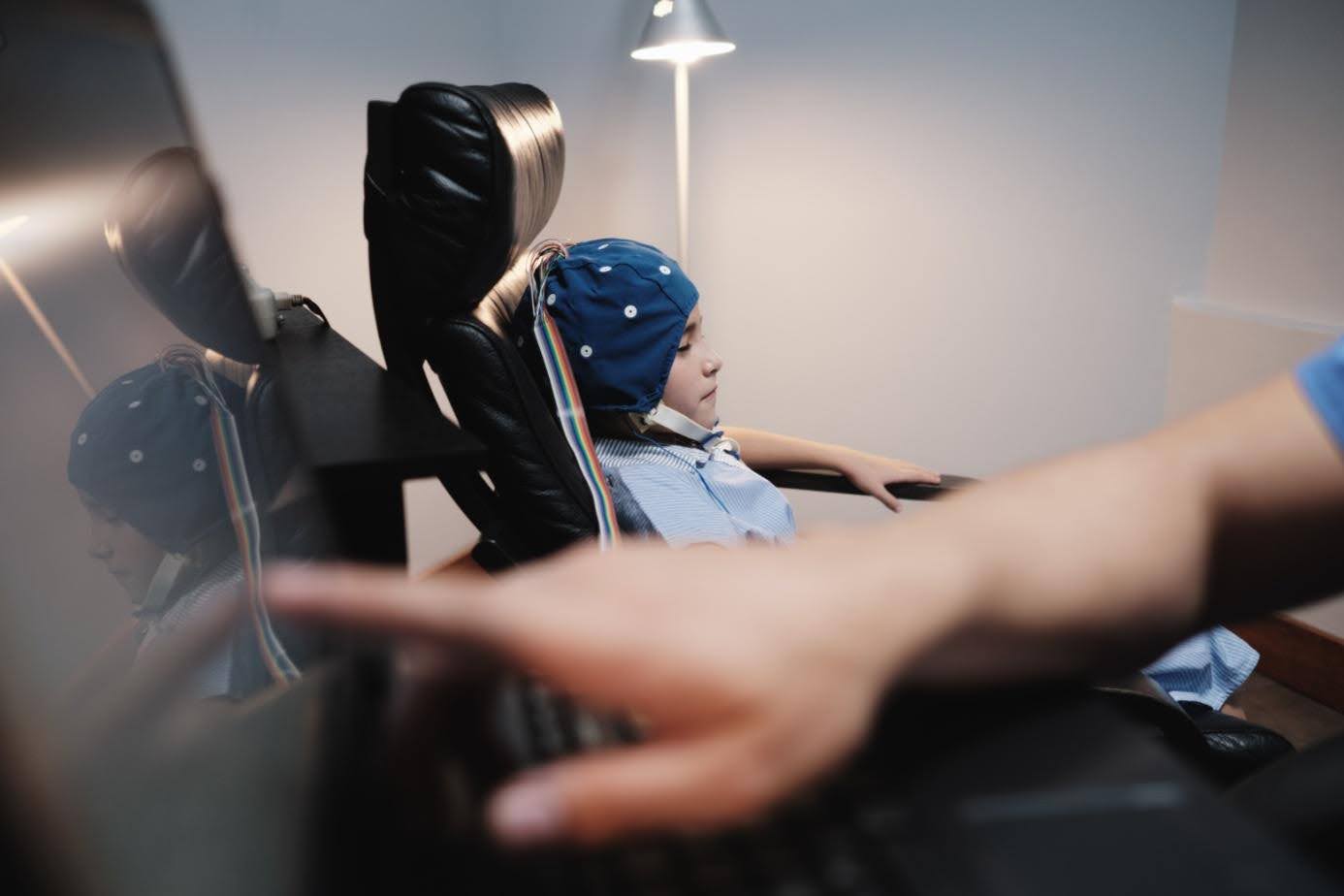
Attention Deficit Hyperactivity Disorder (ADHD) affects about 5 to 7% of school-age children in Canada. Restlessness, impulsivity, or difficulty focusing—these symptoms can impact academic performance, family life, and self-esteem. Faced with these challenges, parents are increasingly turning to complementary approaches to medication, including neurofeedback, offered notably by Neuroperforma.
Why consider neurofeedback for children with ADHD?
Neurofeedback trains the brain to regulate its brain waves more effectively. This approach significantly improves attention and behavior control in children with ADHD. However, it is essential to understand the mechanisms behind ADD/ADHD to see how neurofeedback is applied and to grasp its concrete benefits better.
In the context of ADHD, neurofeedback is attracting growing interest. Research conducted in Canada by Geneviève Moreau, under the supervision of Professor Caroline Picard at UQAM, shows promising results.
Their studies indicate significant improvements in concentration, reduced impulsivity, and better sleep quality in children who followed a neurofeedback protocol.
With this non-invasive technique, children learn to better regulate their brain activity through interactive games or visual animations. Sessions are therefore particularly engaging for younger participants.
Beyond managing the classic symptoms of ADHD, this approach can also strengthen self-esteem. By making children active participants in their own progress, neurofeedback provides them with a tangible tool to better understand and manage their brain’s daily functioning.
How does a neurofeedback program for children work?
-
Initial Assessment with Quantitative EEG (qEEG)

The program begins with a complete neurophysiological evaluation using a quantitative EEG (qEEG). The child’s brain activity is recorded through a headset with electrodes. The qEEG identifies brain areas where electrical activity deviates from the norm. The data analysis is then used to develop a personalized neurofeedback protocol. qEEG is well recognized for its ability to establish a precise neurophysiological profile, serving as the foundation for a more tailored intervention.
-
Interactive, Child-Friendly Sessions
Neurofeedback sessions are fun and interactive. The child sits comfortably in front of a screen and watches a movie of their choice. When the brain adopts the desired activity—for example, better focus or less impulsivity—the image plays smoothly. If the brain shows inefficient activity, the movie pauses. Over time, the brain learns to regulate itself properly.
-
Number of Sessions and Recommended Frequency
The standard program includes at least 12 training sessions, with 1 to 3 sessions per week, depending on the child’s ability to remain attentive during training.
Each training session lasts approximately 30 minutes, while the overall clinic visit typically lasts around 50 minutes to allow for equipment setup and a brief follow-up with the parent regarding the child’s symptom progression.
-
The Child’s Engagement: A Key Success Factor
The child feels no pain or constraints. On the contrary, they perceive the sessions as a game, a break from routine. This enjoyable context encourages adherence to the treatment, which is essential for lasting results.
Neurofeedback for Children with ADHD: Conditions for Success
The College of Physicians of Quebec recognizes the clinical relevance of neurofeedback, particularly in the management of ADHD. Strict supervision ensures optimal effectiveness, especially for children.
Although favorable results are observed, effects vary from one child to another. Competent professionals guarantee high-quality practice. Using qEEG to create a personalized protocol is also a key condition for a successful approach.
Neurofeedback is not a miracle cure. Its usefulness lies only within the framework of a comprehensive support strategy tailored to the child’s specific needs. Success also depends on:
- adapted academic support with teaching strategies specific to ADHD,
- healthy lifestyle habits, including adequate sleep, proper nutrition, and regular physical activity,
- strong parental involvement, supported by workshops or family therapy, and, if necessary, adjusted medication.
Conclusion
Far from being a marginal practice, neurofeedback emerges as a highly effective complementary tool when integrated into a comprehensive care strategy. When professionally supervised, this recognized technique can strengthen the brain’s self-regulation abilities.
In practice, neurofeedback can help a child with ADHD improve focus, better manage impulses, and develop stronger emotional regulation.
To find out if this method could be a valuable addition to your child’s care journey, don’t hesitate to book a personalized evaluation with Neuroperforma.

